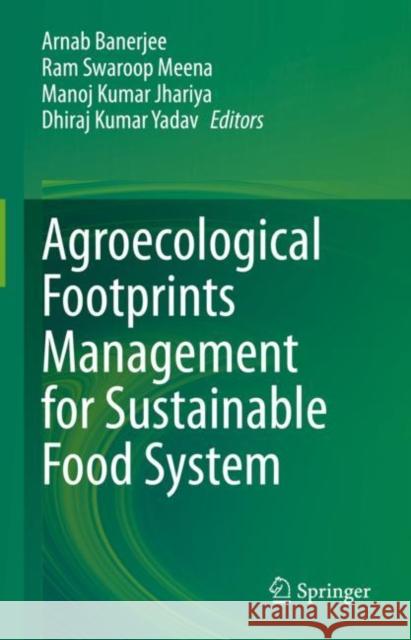Agroecological Footprints Management for Sustainable Food System » książka



Agroecological Footprints Management for Sustainable Food System
ISBN-13: 9789811594953 / Angielski / Twarda / 2020 / 514 str.
Agroecological Footprints Management for Sustainable Food System
ISBN-13: 9789811594953 / Angielski / Twarda / 2020 / 514 str.
(netto: 958,46 VAT: 5%)
Najniższa cena z 30 dni: 963,86
ok. 22 dni roboczych
Dostawa w 2026 r.
Darmowa dostawa!
Preface.- Chapter 1: Ecological Footprints in Agroecosystem- An Overview.- Chapter 2: Natural Resources Intensification and Footprints Management for Sustainable Food System.- Chapter 3: Agroecology for Sustainable Food System and Footprint Mitigation.- Chapter 4: Carbon and Nitrogen Footprint Management for Food Security.- Chapter 5: Future Transitions to a Renewable Stationary Energy Sector- Implications the Future Ecological Footprint and Land use.- Chapter 6: Biomass as a Cornerstone of Circular Economy: Resources, Energy and Environment.- Chapter 7: Land Footprint Management and Policies.- Chapter 8: Grey Water Footprint Accounting, Challenges and Problem Solving.- Chapter 9: Water Footprint in Rice-based Cropping Systems of South Asia.- Chapter 10: Impact of Urbanization and Crude Oil Exploration in Niger Delta Mangrove Ecosystem and its Livelihood Opportunities: A Footprint Perspective .- Chapter 11: Challenges for Corporate Ecological Footprint Calculations in the SME Sector in Hungary– Case Study Evidence from Six Hungarian Small Enterprises.- Chapter 12: Opportunities, Challenges and Ecological Footprint of Sustaining Small Ruminant Production in the Changing Climate Scenario.- Chapter 13: Determining the Perspectives of Turkish Students Ecological Footprint Awareness Based upon a Survey.- Chapter 14: Energy and Climate Footprint Towards the Environmental Sustainability.- Chapter 15: Ecofootprint of Charcoal production and it’s Economic Contribution Towards Rural Livelihoods in Sub-Saharan Africa.- Chapter 16: River Sand Mining and its Ecological Footprint at Odor River, Nigeria.
Agroecological footprints are a unique and popular concept for sustainable food system. Measuring and keeping a tab on the agroecological footprints of various human activities has gained remarkable interest in the past decade. From a range of human activities, food production and agriculture are most essential as well as extremely dependent on the agroecosystems. It is therefore crucial to understand the interaction of agroecosystem constituents with the extensive agricultural practices. The environmental impact measured in terms of agroecological footprints for a healthy for the sustainable food system. The editors critically examine the status of agroecological footprints and how it can be maintained within sustainable limits. Drawing upon research and examples from around the world, the book is offering an up-to-date account, and insight into how agroecology can be implemented as a solution in the form of eco-friendly practices that would boost up the production, curbs the environmental impacts, improves the bio-capacity, and reduces the agroecological footprints.
1997-2025 DolnySlask.com Agencja Internetowa
KrainaKsiazek.PL - Księgarnia Internetowa









